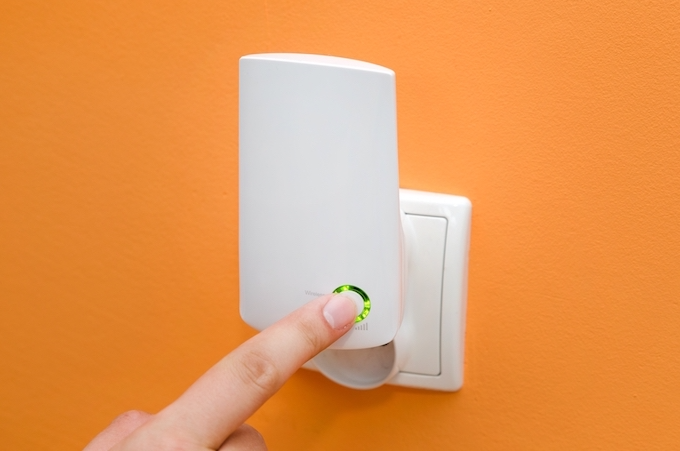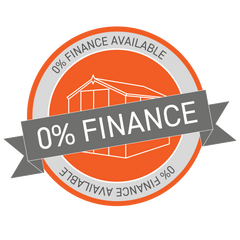Want to get online from your shed, garden office, or workshop – but not sure which is the best way? Here we bring you a comprehensive guide to all the main solutions. We take a look at wireless and cabled connections, as-well-as mobile wifi and more – your handy guide to getting online in your garden.
At a glance:
- Check the range of your router and consider options to extend its reach
- Consider running ethernet cables alongside your mains cables
- Use a powerline adapter to send the signal from your router through your shed’s electricity supply
- Try mobile tethering – an internet connection anywhere
1. Check the range of your router

Image: Shutterstock
Before you spend money on signal extenders, additional cabling or adapters, do check whether your existing home WiFi signal reaches your shed. Make sure your router is an up-to-date- model as older units are often less powerful than newer versions; contact your ISP to see if you qualify for a free upgrade.
To improve the reach of your home set-up, you could try moving your router so that it’s closer to your shed, and remove obstacles like trees and shrubs which might interfere with the signal.
Also bear in mind that things like insulation and double glazing will negatively affect the strength of the signal coming from your house.
WiFi Extender
Often called WiFi ‘boosters’, these units do not in fact ‘boost’ your home WiFi signal – they ‘extend’ its reach. If your WiFi signal doesn’t reach your shed, this is an option that’s potentially cheap to test, with units costing as little as £15, and which might just work.
Remember this solution won’t do anything to improve the strength or speed of the signal emanating from your home Wifi hub. The rule of thumb is to make sure your home WiFi box is an up-to-date model, otherwise your new extender unit is only broadcasting a weak signal further from the source.
Point-to-point
A more reliable way to extend your home WiFi signal is to opt for a point-to-point system. Simply attach one unit to the outside of your home, the other to your shed; a pair of point-to-point signal boosters costs from around £100 upwards. Remember – you get what you pay for.
Newer systems have the advantage of coming ready configured so you can get connected with minimum fuss. Other features may include noise analysis – identifying things that obscure your WiFi signal – so you can position your units for optimum effectiveness, and detailed analytics.
2. Consider ethernet cabling

Image: Shutterstock
If you’re installing an electric supply to your shed, why not run an ethernet cable at the same time? A straightforward way to ensure you get a reliable connection, make sure the location of any electrical cable is well marked with permanent signage, and that the cable is buried deep enough that nobody will accidentally plunge a spade through it.
When you run electrical and ethernet cables through the same conduit, there’s a risk that the electromagnetic field produced by the electric cable might jumble the signal travelling along your data cable.
It’s unlikely to be much of a problem with domestic power lines, but to be on the safe side, consider buying shielded Cat6 ethernet cable.
3. Use a powerline adapter

Image: Shutterstock
This is a simple way to get your shed online, by sending the signal from your router through the electricity cable to your shed. Plug one unit into a socket in your house and use the ethernet cable supplied to connect it to your home WiFi hub. Now plug the second unit into a socket in your shed and connect it to your device or shed-based WiFi router.
Costing from £40 upwards, the more you pay, the faster speeds you can expect. Remember, this system only works if the electricity supply in your shed comes from the same distribution box as that of your house.
4. Try mobile tethering

Image: Shutterstock
Use your smartphone’s WiFi hotspot facility to access the internet from your shed. Do bear in mind that all the data you use is deducted from your monthly data allowance; going over your limit is usually an expensive mistake.
Alternatively, take out a separate contract on a mobile WiFi hub. For accounting purposes, keeping your private phone and your mobile internet separate might be a good idea if you intend to use your shed as a home office.
Installing an internet connection makes your shed a versatile space for work or play. As with any task, make sure you have all the components you’ll need before you begin the job, and if in doubt – call in the professionals.




